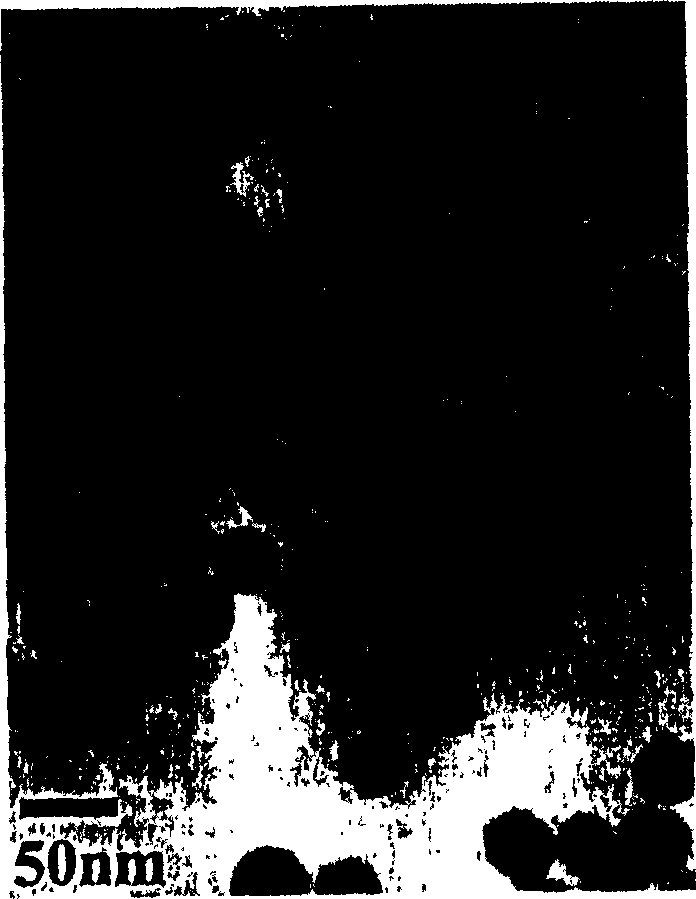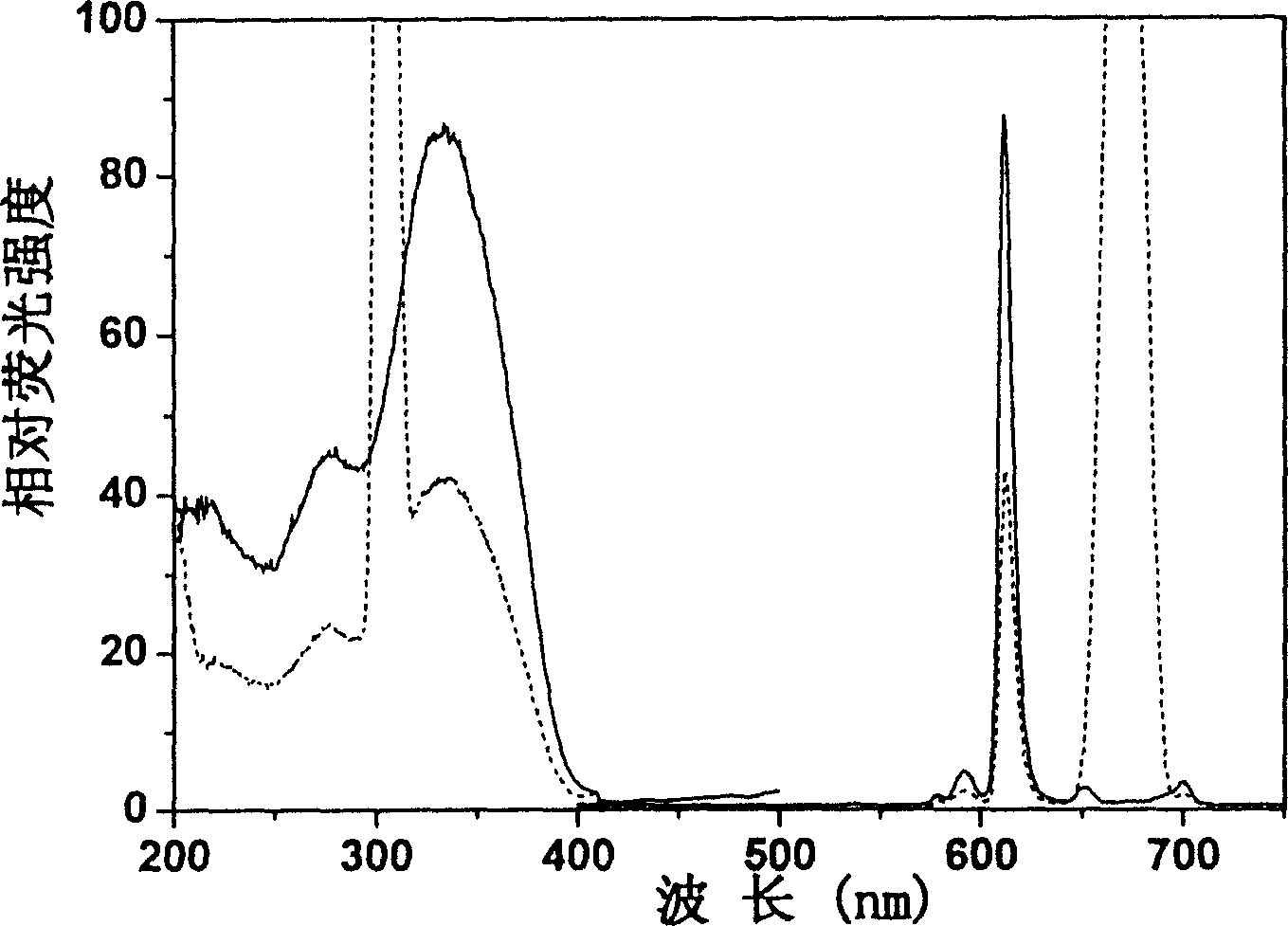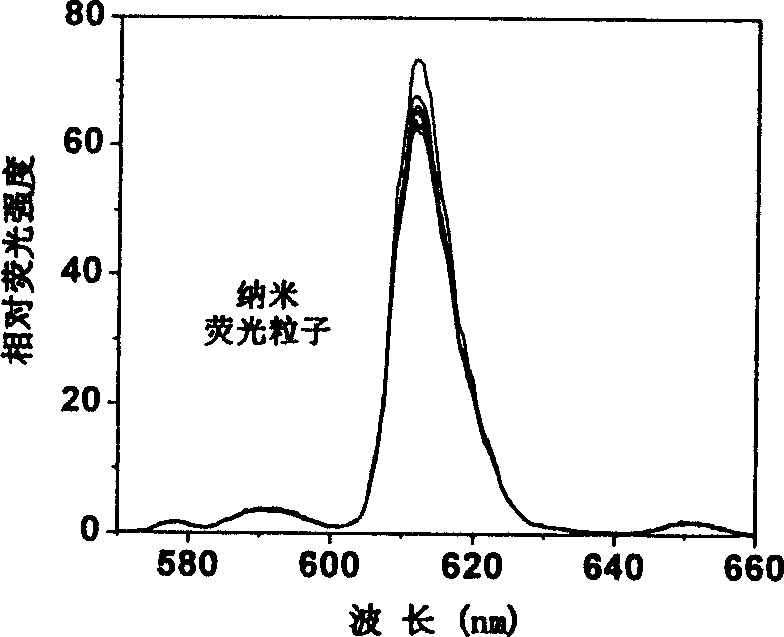Beta-diketone-trivalent europium complex nano fluorescent probe, its preparation and use thereof
A nano-fluorescent probe and trivalent europium technology, which is applied in the field of nano-rare earth fluorescent probes, can solve the problems of weakened fluorescence, easy flickering, and reduced measurement sensitivity, so as to solve the problem of fluorescent bleaching, enhance photostability, and high luminous intensity Effect
- Summary
- Abstract
- Description
- Claims
- Application Information
AI Technical Summary
Problems solved by technology
Method used
Image
Examples
Embodiment 1
[0044] Covalently bonded 4,4'-bis(1", 1", 1", 2", 2", 3", 3"-heptafluoro-4", 6"-hexanedione-6"-yl) Preparation and characterization of fluorescent nanoparticles of chlorosulfonyl-o-diphenylbenzene (abbreviated as BHHCT)-europium complex:
[0045] (1) Covalently bonded BHHCT-Eu 3+ Preparation of fluorescent nanoparticles of the complex:
[0046] Add BHHCT to cyclohexane (refer to literature 11 for the synthetic method: J.Yuan, K.Matsumoto, H.Kimura, Anal.Chem., 1998, 70, 596-601) and aminopropyltriethoxysilane (abbreviated as APS ), the molar ratio of BHHCT to APS is 1:5 to 1:50, preferably 1:7 to 1:18, the molar concentration of BHHCT in the system is 0.05 to 0.9 μmol / ml, stirred and reacted for 2 hours at room temperature, then added BHHCT molar Europium trichloride (EuCl 3 ), ultrasonic vibration for 20 minutes, the prepared APS-BHHCT-Eu 3+ The combination is preserved for future use. Mix cyclohexane, n-octanol, Triton X-100 and water in a certain proportion (molar rati...
Embodiment 2
[0058] Using covalently bonded BHHCT-Eu 3+ The time-resolved fluorescent immunoassay method using complex nano fluorescent particles as markers is used to determine the hepatitis B surface antigen (HBsAg for short) in human serum.
[0059] (1) Use nano-rare earth fluorescent particles to label streptavidin (SA for short)
[0060] Disperse 1 mg of nanoparticles into 1.0 ml of 0.1 mol / L phosphate buffer solution (pH=7.1), oscillate with ultrasonic waves for 20 minutes, add 5 mg of bovine serum albumin (BSA for short), and add 300 μl of 1% pentadiene under stirring Aldehyde (phosphate buffer solution), react at room temperature for 24 hours, and collect the precipitate by centrifugation. The precipitate was washed twice with 200 μl of phosphate buffer solution, then added to 200 μl of 1% glutaraldehyde (phosphate buffer solution), then 1 mg of SA was added, and after 24 hours of reaction at room temperature, 0.5 mg of NaBH was added 4 Reduction, reacted at room temperature for ...
PUM
 Login to View More
Login to View More Abstract
Description
Claims
Application Information
 Login to View More
Login to View More - R&D
- Intellectual Property
- Life Sciences
- Materials
- Tech Scout
- Unparalleled Data Quality
- Higher Quality Content
- 60% Fewer Hallucinations
Browse by: Latest US Patents, China's latest patents, Technical Efficacy Thesaurus, Application Domain, Technology Topic, Popular Technical Reports.
© 2025 PatSnap. All rights reserved.Legal|Privacy policy|Modern Slavery Act Transparency Statement|Sitemap|About US| Contact US: help@patsnap.com



